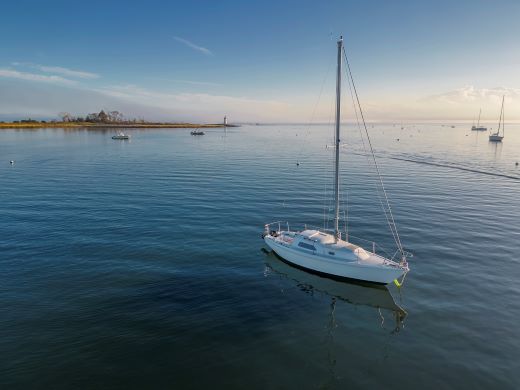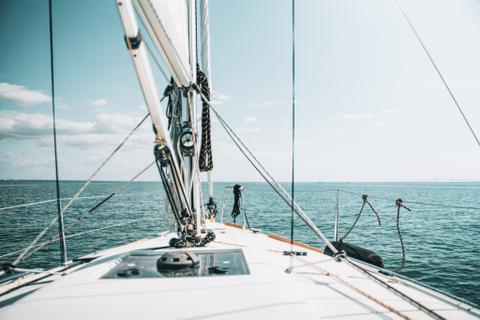In the exciting world of sailboats, ketches and yawls are two classic options. While there are many similarities between the two vessels, they’re not created equal.
In fact, one significant distinction relates to the placement of the mast, which can influence the usability and versatility of each boat. To truly understand how these sailboats differ, keep reading our yawl vs. ketch guide.
What is a Ketch?
Put simply, a ketch features two masts: a mainmast and a smaller mizzen mast located ahead of the rudder post. The divided sail plan makes a ketch easier to handle, as each sail is smaller and more manageable, especially in heavy weather.
Also, since the sail plan is divided into smaller parts, a ketch is far easier to handle and adjust during extreme weather conditions. While a ketch has its perks, it also requires additional maintenance and rigging.
In addition, it’s more expensive because there are two masts and multiple sails. If you’re a newer boater or on a tighter budget, a ketch might be out of reach.
What is a Yawl?
Even though a yawl boat might look like a ketch, its mizzen mast differs in size and location. The mast, which is behind the rudder post, is much smaller. In turn, the sail area is smaller as well.
While a yawl isn’t as powerful as a ketch, it offers better control, which can be particularly beneficial during harsh and fluctuating wind conditions. Yawls are often lighter and smaller than ketches, which can make them feel faster and sometimes more affordable.
Understanding the Main Differentiator: The Mizzen Mast
As we previously mentioned, yawl and ketch sailboats have a lot in common. However, the location of their mizzen mast relative to the rudder post is what sets them apart.
The mizzen on the ketch sits in front of the rudder post, while the mizzen on the yawl lies behind it. While this may seem like a minor distinction, it actually has a significant impact on the balance, sail plan, power, control, and price of the sailboat. As a result, these sailboats are geared toward different types of sailors, lifestyles, and needs.
Which Sailboat is Best: Ketch, Yawl, or Modern Sloop?
The right sailboat depends on a variety of factors, including your budget, boating habits, and personal preferences. If you’re in the market for a versatile sailboat that allows for excellent performance in virtually all wind conditions, a ketch is the way to go. It features a larger sail and several configurations that are ideal for overnight cruising and day sailing.
Due to its smaller mainsail, a yawl is a better option if you typically sail solo. However, if you prefer balanced handling and versatility for blue-water cruising, a ketch boat may be your best bet. Yawls still offer excellent control and can be ideal for experienced solo sailors—you can lock in the wind angle and maintain course while attending to other duties.
It’s essential to keep in mind that classic sailboat rigs like yawls and ketches aren’t as common as they used to be. These days, most new boats favor simpler sloop rigs for performance, cost, and ease of handling. However, if you’re a sailing enthusiast or in the market for a sailboat, it can be interesting to explore how they differ from modern options.
Ketch vs. Yawl: Use Discover Boating’s Boat Finder to Find the Right One
For a timeless, responsive sailboat, a yawl is likely the best option, especially if you want greater control. However, if you’re a long-distance cruiser or your boating needs change often, a ketch rig is likely the better investment.
To zero in on the best sailboat for your unique situation, check out Discover Boating’s Boat Finder tool and explore current sailboat options. There is no shortage of sailboats, and you can easily filter by budget, brand, and more. Once you find a sailing vessel that meets most of your checklist, be sure to take it on the water.
A first-hand boating experience can confirm that you’ve found the best fit or direct you to keep searching. Best of luck with finding your perfect sailboat!


